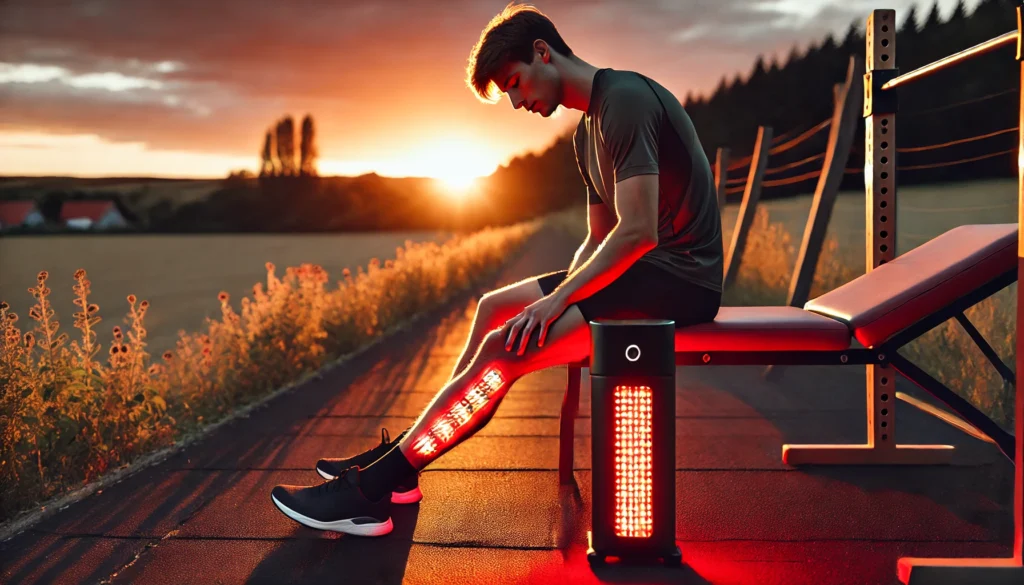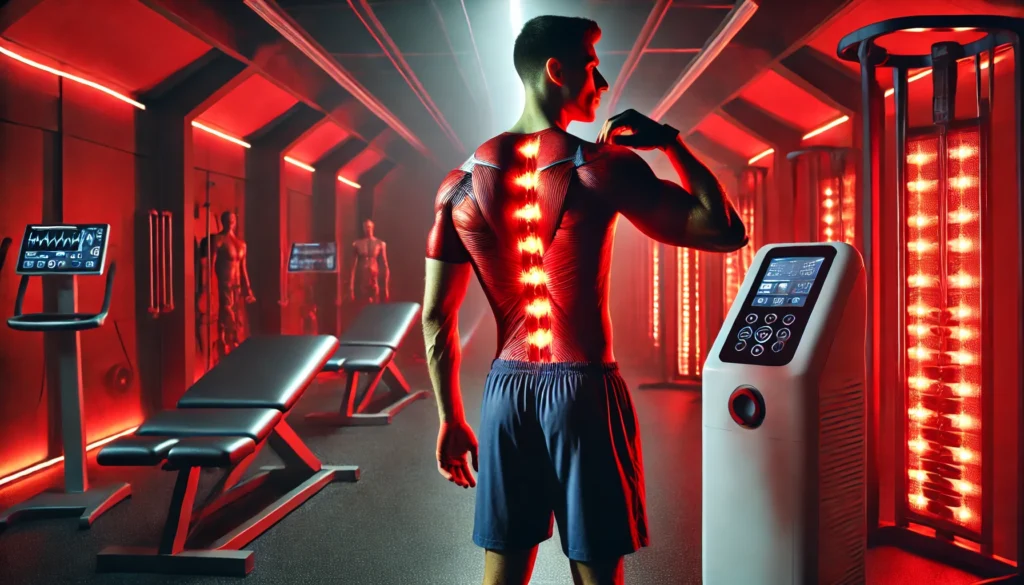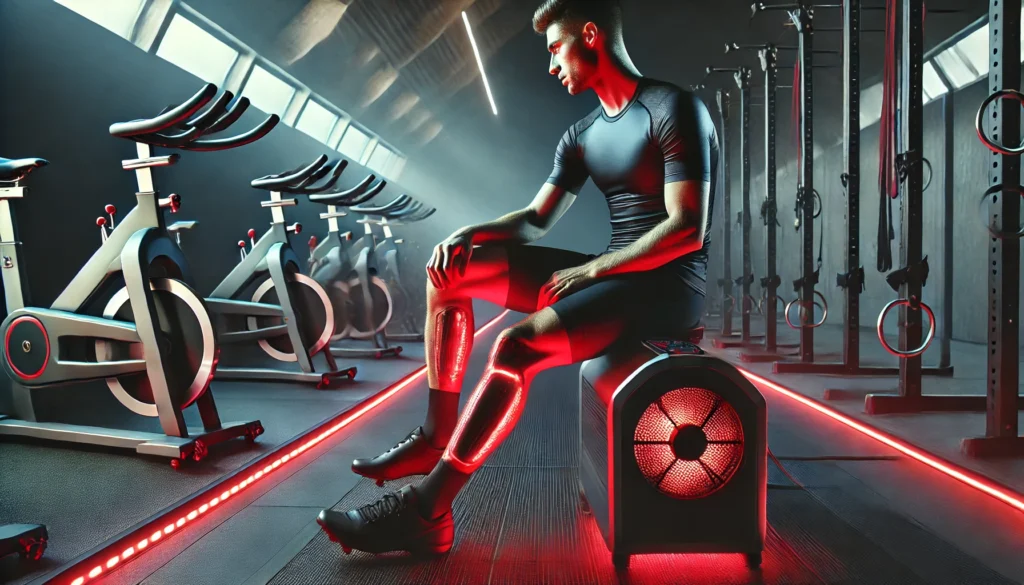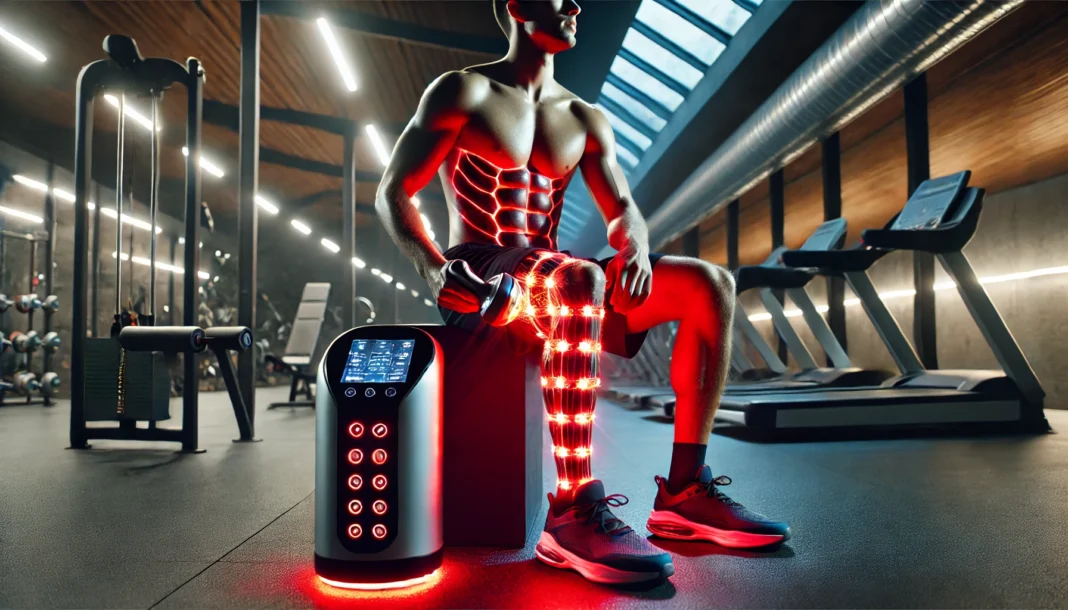Understanding Light Therapy and Its Role in Athletic Recovery
Athletes constantly seek innovative ways to enhance their recovery process and optimize performance. One increasingly popular method is the use of a light therapy device, which utilizes specific wavelengths of light to promote cellular regeneration, reduce inflammation, and improve circulation. Originally developed for medical and therapeutic applications, light therapy has found its place in the athletic world due to its ability to accelerate muscle recovery, alleviate pain, and support overall well-being.
You may also like: Red Light Therapy for Muscle Recovery: How Athletes Can Speed Healing and Enhance Performance
The mechanisms behind light therapy, particularly red light and near-infrared light, involve stimulating the mitochondria within cells. This process enhances adenosine triphosphate (ATP) production, which provides the necessary energy for cellular repair and growth. By leveraging this technology, athletes can recover more efficiently from strenuous workouts and injuries, ultimately leading to improved performance and reduced downtime between training sessions.
The Science Behind Red Light Therapy and Athletic Performance
A growing body of scientific research supports the efficacy of light therapy in enhancing athletic performance. Red light therapy companies have invested significantly in studies demonstrating its impact on muscle repair, inflammation reduction, and improved endurance. When light penetrates the skin, it interacts with chromophores within mitochondria, triggering a cascade of beneficial biological responses.
One of the primary advantages of using a light therapy device is its ability to reduce oxidative stress and inflammation, which are major contributors to delayed recovery. By mitigating these factors, athletes can experience less muscle soreness and a faster return to peak performance. Furthermore, increased ATP production facilitates quicker tissue repair, meaning injuries heal more efficiently, and overall muscle function improves.
In addition to muscle recovery, red light therapy has been shown to enhance circulation by stimulating the production of nitric oxide. This vasodilation effect allows for greater oxygen and nutrient delivery to tissues, which plays a crucial role in endurance, stamina, and post-exercise recovery. Athletes incorporating light therapy into their routine often report feeling more energized and resilient during their training sessions.
Benefits of Light Therapy for Muscle Recovery
Athletes engage in intense physical activity that often results in microtears within muscle fibers. While this is a normal part of muscle growth, excessive damage without adequate recovery can lead to overtraining and diminished performance. A light therapy device aids in mitigating this by accelerating muscle tissue repair, reducing inflammation, and alleviating post-exercise soreness.
The use of red light therapy has been found to decrease the levels of creatine kinase, a biomarker of muscle damage, thereby indicating faster recovery. Additionally, it helps regulate inflammatory cytokines, reducing swelling and discomfort. The result is a more effective recovery process, enabling athletes to sustain high levels of training without the risk of prolonged fatigue or injury.
Another significant benefit of light therapy is its ability to improve flexibility and joint mobility. Athletes, especially those in high-impact sports, often experience stiffness and reduced range of motion due to muscle strain and joint stress. Regular exposure to red light therapy has been linked to enhanced collagen synthesis, which supports connective tissue health and flexibility. This improvement not only aids in recovery but also contributes to injury prevention.
How Light Therapy Enhances Endurance and Performance
Endurance is a critical component of athletic success, and maximizing it requires a combination of training, nutrition, and recovery strategies. A light therapy device supports endurance by optimizing cellular function and reducing fatigue-related oxidative stress. The enhanced mitochondrial activity facilitated by red light therapy ensures that muscles receive a steady supply of energy, allowing athletes to sustain performance for extended durations.
Several studies have explored the impact of red light therapy on athletic endurance. Research indicates that pre-exercise exposure to red light can enhance muscular efficiency, delay the onset of fatigue, and improve overall exercise tolerance. By priming the muscles before a workout or competition, athletes can perform at a higher intensity with less perceived exertion.
Beyond its direct effects on muscle function, light therapy has been shown to positively influence sleep quality. Adequate rest is essential for athletic recovery, as it is during sleep that the body undergoes significant repair and regeneration. Red light therapy has been found to regulate circadian rhythms and promote deeper, more restorative sleep cycles. By enhancing sleep quality, athletes can experience improved recovery, reduced stress levels, and better overall performance.
Injury Prevention and Rehabilitation with Light Therapy
Injuries are an inevitable part of an athlete’s journey, but their impact can be minimized through proactive recovery strategies. A light therapy device plays a crucial role in injury prevention by reducing muscle fatigue, promoting flexibility, and maintaining optimal circulation. Regular use can strengthen tissues, making them more resilient to stress and reducing the likelihood of strains, sprains, and other injuries.
For athletes recovering from injuries, red light therapy provides a non-invasive and effective rehabilitation method. It accelerates wound healing, reduces scar tissue formation, and alleviates pain associated with common sports injuries such as tendonitis, ligament tears, and stress fractures. By improving cellular function and enhancing circulation, light therapy ensures that injuries heal faster, allowing athletes to return to training with minimal downtime.
Additionally, red light therapy has been found to be beneficial for conditions such as delayed onset muscle soreness (DOMS) and chronic pain syndromes. Athletes suffering from persistent discomfort can use light therapy as part of a holistic recovery plan, reducing their reliance on pharmaceutical interventions while promoting natural healing.

Integrating Light Therapy into an Athlete’s Routine
To maximize the benefits of a light therapy device, athletes should integrate it strategically into their training and recovery routines. Consistency is key, as regular exposure ensures cumulative benefits. Most red light therapy companies recommend daily sessions ranging from 10 to 20 minutes, depending on the specific needs of the athlete.
Pre-exercise application of red light therapy can prime muscles for performance by increasing blood flow and reducing stiffness. Post-exercise use focuses on accelerating recovery, minimizing soreness, and supporting muscle repair. Many athletes also incorporate light therapy before bedtime to enhance sleep quality and optimize the body’s natural recovery processes.
Choosing a high-quality red light therapy company is essential to achieving optimal results. Devices with appropriate wavelengths (typically in the 600-900 nm range) and sufficient light intensity are critical factors to consider. Additionally, athletes should ensure that the device covers a broad treatment area to maximize exposure and efficacy.
Frequently Asked Questions (FAQ) on Light Therapy Devices for Athletic Recovery and Performance
How does a light therapy device compare to traditional recovery methods like ice baths and massage therapy?
A light therapy device offers a fundamentally different approach to recovery compared to ice baths and massage therapy by targeting cellular energy production rather than focusing solely on inflammation reduction or muscle manipulation. Ice baths primarily work by constricting blood vessels to reduce swelling and temporarily numb sore muscles, while massage therapy manually stimulates circulation to break down tension and improve flexibility. In contrast, light therapy penetrates deep into tissues to enhance mitochondrial function, leading to increased ATP production that speeds up cellular repair. Additionally, while ice baths and massage require direct physical interaction, a light therapy device can be used passively, making it a convenient option for athletes who want a non-invasive, effortless recovery tool. Many professional athletes now integrate multiple modalities, combining light therapy with traditional methods for a more comprehensive recovery regimen.
Can a light therapy device be used before workouts to enhance performance?
Yes, pre-workout use of a light therapy device has been shown to improve circulation, increase muscle oxygenation, and optimize cellular energy production, leading to enhanced performance. When used before exercise, red light therapy stimulates nitric oxide production, which dilates blood vessels and increases blood flow to the muscles, ensuring they are well-prepared for intense activity. This process helps reduce the risk of muscle strain and fatigue, allowing for more sustained effort during training sessions. Additionally, research indicates that athletes who use red light therapy prior to workouts experience delayed onset of muscle fatigue and improved endurance. By priming the muscles before activity, athletes can gain a competitive edge and reduce the likelihood of injury.
Are all red light therapy companies the same in terms of product quality and effectiveness?
Not all red light therapy companies offer the same level of quality, and the effectiveness of a device depends on factors such as wavelength accuracy, power output, and design efficiency. High-quality devices from reputable companies ensure that the light emitted falls within the scientifically supported therapeutic range, typically between 600-900 nanometers. Some lower-end products may lack sufficient intensity or use inferior LEDs, leading to reduced penetration depth and suboptimal results. The best red light therapy companies invest in clinical research and rigorous testing to ensure their devices meet professional standards. Athletes looking for reliable options should seek out companies that provide transparent specifications, FDA-approved devices, and positive customer testimonials from professional sports organizations.
How does light therapy impact sleep quality, and why is this important for athletic recovery?
One of the lesser-known benefits of using a light therapy device is its ability to regulate circadian rhythms and improve sleep quality, which is essential for athletic recovery. Sleep is the time when the body undergoes significant muscle repair, hormone regulation, and memory consolidation—all crucial factors for peak performance. Red light therapy has been shown to influence melatonin production, the hormone responsible for sleep-wake cycles, helping athletes fall asleep faster and experience deeper, more restorative sleep. Unlike blue light from screens, which disrupts sleep patterns, red light exposure in the evening promotes relaxation and primes the body for rest. Better sleep leads to faster muscle recovery, improved cognitive function, and enhanced overall athletic performance.

Can light therapy help prevent injuries rather than just aid in recovery?
Yes, regular use of a light therapy device can play a crucial role in injury prevention by strengthening tissues, improving circulation, and maintaining optimal muscle function. By promoting collagen production, red light therapy helps fortify tendons, ligaments, and connective tissues, making them more resilient to strain. Additionally, the increased blood flow facilitated by red light therapy ensures that muscles receive adequate oxygen and nutrients, reducing the likelihood of cramps and muscle fatigue. Athletes who incorporate red light therapy into their routine often report fewer occurrences of overuse injuries, such as tendonitis and stress fractures. This proactive approach allows them to maintain high training volumes without setbacks caused by avoidable injuries.
What role does red light therapy play in mental recovery and stress reduction for athletes?
While the primary focus of a light therapy device is often on physical recovery, its effects on mental well-being are equally significant. Red light therapy has been linked to reduced cortisol levels, the primary stress hormone, which can help athletes manage the mental strain associated with intense training and competition. Additionally, exposure to red light stimulates serotonin production, a neurotransmitter that contributes to feelings of relaxation and well-being. Athletes dealing with performance anxiety or burnout may find that regular sessions with a light therapy device contribute to improved focus, mood stabilization, and overall mental clarity. As recovery is not just about physical repair but also about maintaining a balanced mental state, red light therapy can be a valuable tool for holistic athletic well-being.
Can light therapy be effective for endurance athletes, such as marathon runners and cyclists?
Endurance athletes, including marathon runners and cyclists, can greatly benefit from consistent use of a light therapy device, as it enhances mitochondrial efficiency and delays muscle fatigue. Studies have shown that red light therapy improves oxygen utilization at the cellular level, allowing athletes to sustain peak performance for longer periods without excessive energy depletion. Additionally, endurance athletes often experience prolonged muscle soreness due to repetitive motion and extended exertion, which red light therapy can help alleviate through its anti-inflammatory properties. The increased ATP production also contributes to faster glycogen replenishment, ensuring that muscles recover quickly between training sessions. Many professional endurance athletes now incorporate red light therapy into their pre-race and post-race routines to optimize their performance and longevity in the sport.
How does light therapy impact inflammation and joint health for athletes?
Inflammation is a common concern for athletes, particularly those involved in high-impact sports, and a light therapy device has been proven to be an effective tool for reducing chronic and acute inflammation. By modulating the body’s inflammatory response, red light therapy helps decrease the production of pro-inflammatory cytokines while promoting anti-inflammatory mediators. This process leads to reduced swelling, improved joint mobility, and less discomfort from conditions like arthritis and tendonitis. Athletes who use red light therapy consistently often report greater flexibility and a reduction in joint stiffness, enabling them to perform at their best. Unlike medications that mask pain temporarily, red light therapy addresses the root cause of inflammation, promoting long-term joint health and function.
Are there any risks or side effects associated with using a light therapy device?
When used properly, a light therapy device is considered safe with minimal risks or side effects. Unlike ultraviolet (UV) light, red and near-infrared light do not cause skin damage or increase the risk of burns when used according to manufacturer guidelines. However, excessive exposure beyond recommended durations can potentially lead to temporary skin irritation or mild headaches in some individuals. It is important for athletes to follow the usage instructions provided by red light therapy companies to ensure optimal results without adverse effects. Consulting with a healthcare professional before starting light therapy can also help individuals with specific medical conditions determine the best approach for integrating it into their routine.

Conclusion: Unlocking Peak Performance with Light Therapy
Athletes continually seek advanced recovery methods to gain a competitive edge, and a light therapy device offers a scientifically backed solution to enhance performance and reduce recovery time. By stimulating cellular function, reducing inflammation, and improving circulation, light therapy provides a holistic approach to muscle repair, endurance enhancement, and injury prevention.
The increasing investment by red light therapy companies in research and development highlights the growing recognition of this technology in sports science. As more athletes integrate light therapy into their training regimens, the potential for improved performance and longevity in sports becomes increasingly evident. Whether used for daily recovery, injury rehabilitation, or performance enhancement, light therapy stands as a powerful tool in the modern athlete’s arsenal.
athletic recovery, muscle regeneration, sports performance, red light therapy benefits, sports recovery tools, athletic injury prevention, endurance enhancement, training recovery, muscle soreness relief, injury rehabilitation, sports science innovations, muscle fatigue reduction, best red light therapy devices, workout recovery, inflammation reduction, sleep optimization, performance enhancement tools, sports medicine, fitness technology, high-performance training
Further Reading:
Photobiomodulation in human muscle tissue: an advantage in sports performance?
How Red Light Therapy Elevates Athletic Performance
Disclaimer
The information contained in this article is provided for general informational purposes only and is not intended to serve as medical, legal, or professional advice. While NewsHealthWatch strives to present accurate, up-to-date, and reliable content, no warranty or guarantee, expressed or implied, is made regarding the completeness, accuracy, or adequacy of the information provided. Readers are strongly advised to seek the guidance of a qualified healthcare provider or other relevant professionals before acting on any information contained in this article. NewsHealthWatch, its authors, editors, and contributors expressly disclaim any liability for any damages, losses, or consequences arising directly or indirectly from the use, interpretation, or reliance on any information presented herein. The views and opinions expressed in this article are those of the author(s) and do not necessarily reflect the official policies or positions of NewsHealthWatch.

